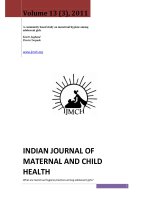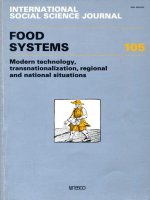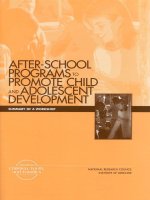Family Factors and Student Outcomes potx
Bạn đang xem bản rút gọn của tài liệu. Xem và tải ngay bản đầy đủ của tài liệu tại đây (1.44 MB, 247 trang )
This document and trademark(s) contained herein are protected by law as indicated in a notice appearing later in
this work. This electronic representation of RAND intellectual property is provided for non-commercial use only.
Unauthorized posting of RAND PDFs to a non-RAND Web site is prohibited. RAND PDFs are protected under
copyright law. Permission is required from RAND to reproduce, or reuse in another form, any of our research
documents for commercial use. For information on reprint and linking permissions, please see RAND Permissions.
Limited Electronic Distribution Rights
This PDF document was made available from www.rand.org as a public
service of the RAND Corporation.
6
Jump down to document
THE ARTS
CHILD POLICY
CIVIL JUSTICE
EDUCATION
ENERGY AND ENVIRONMENT
HEALTH AND HEALTH CARE
INTERNATIONAL AFFAIRS
NATIONAL SECURITY
POPULATION AND AGING
PUBLIC SAFETY
SCIENCE AND TECHNOLOGY
SUBSTANCE ABUSE
TERRORISM AND
HOMELAND SECURITY
TRANSPORTATION AND
INFRASTRUCTURE
WORKFORCE AND WORKPLACE
The RAND Corporation is a nonprofit research
organization providing objective analysis and effective
solutions that address the challenges facing the public
and private sectors around the world.
Visit RAND at www.rand.org
Explore Pardee RAND Graduate School
View document details
For More Information
Browse Books & Publications
Make a charitable contribution
Support RAND
This product is part of the Pardee RAND Graduate School (PRGS) dissertation series.
PRGS dissertations are produced by graduate fellows of the Pardee RAND Graduate
School, the world’s leading producer of Ph.D.’s in policy analysis. The dissertation has
been supervised, reviewed, and approved by the graduate fellow’s faculty committee.
PARDEE RAND GRADUATE SCHOOL
Family Factors and
Student Outcomes
Nailing Xia
This document was submitted as a dissertation in December 2009 in
partial fulfillment of the requirements of the doctoral degree in public
policy analysis at the Pardee RAND Graduate School. The faculty
committee that supervised and approved the dissertation consisted of
Richard Buddin (Chair), Sheila Nataraj Kirby, and Vi-Nhuan Le.
To my father
The RAND Corporation is a nonprofit research organization providing objective analysis
and effective solutions that address the challenges facing the public and private sectors
around the world. RAND’s publications do not necessarily reflect the opinions of its research
clients and sponsors.
R
®
is a registered trademark.
All rights reserved. No part of this book may be reproduced in any form by any
electronic or mechanical means (including photocopying, recording, or information
storage and retrieval) without permission in writing from RAND.
Published 2010 by the RAND Corporation
1776 Main Street, P.O. Box 2138, Santa Monica, CA 90407-2138
1200 South Hayes Street, Arlington, VA 22202-5050
4570 Fifth Avenue, Suite 600, Pittsburgh, PA 15213-2665
RAND URL:
To order RAND documents or to obtain additional information, contact
Distribution Services: Telephone: (310) 451-7002;
Fax: (310) 451-6915; Email:
The Pardee RAND Graduate School dissertation series reproduces dissertations that
have been approved by the student’s dissertation committee.
iii
ACKNOWLEDGEMENTS
Thisworkwouldnothavebeenbroughttolifewithoutthegeneroussupportof
myhardworkingdissertationcommittee:RichardBuddin,SheilaKirby,andVi‐
NhuanLe.Theirscholarship,expertiseandpatienceguidedmethroughseveral
draftsofthisstudy.IamespeciallyindebtedtoDick,agraciousmentorwho
demonstratesthatrigorousscholarshipcanbeaccessibletoeveryone.Iamalso
gratefultoSheilaforherpersistentattention,gentleencouragement,and
extensiveknowledgeinhelpingmenavigatethefieldofeducationpolicy.
Withouttheopportunitiessheprovidedto“practice”thepolicyanalysistoolson
RANDprojects,mytenureatRANDwouldneverhavebeenthedeeply
influentialexperiencethatitbecame.AthankyoutooisextendedtoVi,whose
insightfulcommentsarecriticaltoconstructingeffectivemeasuresandcrafting
analyticmethods.
Iamthankfultomyexternalreader,JillCannon,forhergenerouscontributionof
knowledgeandtime.AshleshaDatarandRolandSturmhavealsokindlygiven
metimeandsuggestionsduringtheearlystageofthedissertationprocess.A
thankyouisalsoowedtoYangLuandXiaoyanLi,myfriendsandcolleaguesat
PardeeRANDGraduateSchoolwhoalwaysansweredmyquestions,nomatter
howtrivialtheymightbe.
Tomyparents,LieqingXiaandRuifangLing,thankyouforyourlove,support
andunderstandingduringmylongyearsofeducation.Iamalsothankfultomy
husband,XiaoningHuang,whohasalwaysbeenthereformeingoodandbad
times.Finally,tomynewbornson,Xiayang,forbringingjoyanddetermination
inthelaststageof
thisdissertation.
v
TABLEOFCONTENTS
Acknowledgements iii
ListofTables ix
ListofFigures xi
Abstract xiii
ExecutiveSummary xv
Chapter1.FamilyFactorsandStudentAchievement:TheCaseofU.S. 1
PreviousLiteratureonFamilyFactorsandStudentAchievement 2
TheoreticalFrameworksofFamilyProcessFactors 2
EmpiricalLiteratureonFamilyProcessFactorsandStudentAchievement 5
ConceptualModel 7
Data 9
SampleandWeights 9
Measures 10
DescriptiveStatistics 11
Racial/EthnicDifferences 17
DifferencesbySES 20
AnalyticMethods 25
MultipleImputation 25
EffectSizeCalculation 26
RegressionModels 26
MultipleTestingIssues 28
Results 29
BaselineandFamilyProcessModels 29
InteractionModels:BlackVs.Non‐Black 35
InteractionModels:SES 38
Discussion 41
Chapter2.FamilyFactorsandNonacademicOutcomes:ThecaseofU.S. 44
PreviousLiteratureonFamilyFactorsandNonacademicOutcomes 44
Data 49
Measures 49
DescriptiveStatistics 51
Racial/EthnicDifferences 57
DifferencesbySES 59
AnalyticMethods 64
MultipleImputation 64
EffectSizeCalculation 64
RegressionModels 65
vi
MultipleTestingIssues 69
Results 69
BaselineandFamilyProcessModels 69
InteractionModels:BlackVs.Non‐BlackandSES 76
Discussion 80
Chapter3.FamilyFactorsandStudentAchievement:AnInternational
Comparison 82
Data 85
SampleandWeights 86
Measures 88
AnalyticMethods 90
Imputation 90
EffectSizeCalculation 91
AnalysisofDatawithPlausibleValues 91
InternationalComparisonandRegressionModels 93
MultipleTestingIssues 94
Results 95
DescriptiveStatistics 95
DifferencesinAchievementandFamilyFactorsAcrossCountries 98
BaselineandFamilyProcessModels 102
InteractionModels 106
Discussion 109
References 112
Appendix1.A.VariablesMeasuringFamilyProcessFactorsinECLS‐K 132
Appendix1.B.ScaleItemsandReliabilityCoefficients 136
Appendix1.C.DescriptiveStatistics:Waves2‐5 138
Appendix1.D.FamilyProcessFactorsbyRace/Ethnicity:Waves2‐5 142
Appendix
1.E.CorrelationsBetweenSESandReading/MathematicsTestScores
146
Appendix1.F.CorrelationsBetweenSESandFamilyProcessFactors:Waves2‐5
147
Appendix1.G.SESbyFamilyProcessFactors:Waves2‐5 148
Appendix1.H.CoefficientsofUnconditionalModels 152
Appendix1.I.CoefficientsofInteractionModels 153
Appendix2.A.ScaleItemsandReliabilityCoefficients 159
Appendix2.B.CorrelationsBetweenSESandTeacherSRSScaleScores 161
Appendix2.C.CoefficientsofUnconditionalModels 162
Appendix2.D.EducationProductionFunctionandEconometricEstimation
Strategies 163
Appendix2.E.SpecificationTests 173
vii
Appendix2.F.OLSCoefficientsofBaselineandFamilyProcessModels 187
Appendix2.G.TobitCoefficientsofBaselineandFamilyProcessModels 192
Appendix2.H.TobitCoefficientsofInteractionModels 202
Appendix3.A.PISA2006CountriesandEconomies 218
Appendix3.B.VariablesMeasuringFamilyProcessFactorsinPISA2006 219
Appendix3.C.AchievementTestScoresbyCountry 220
Appendix3.D.CoefficientsofUnconditionalModels 221
Appendix3.E.CoefficientsofInteractionModels 222
ix
LISTOFTABLES
Table1.Chapter1:FamilyStatusVariablesinBaselineandFamilyProcess
Models xv
Table2.Chapter1:FamilyProcessVariablesofStatisticalandSubstantive
Importance xvi
Table3.Chapter2:FamilyStatusVariablesinBaselineandFamilyProcess
Models xvii
Table4.Chapter3:FamilyStatusVariables(SES)inBaselineandFamilyProcess
Models xviii
Table5.Chapter3:FamilyProcessVariablesofStatisticalandSubstantive
Importance xviii
Table1.1.DescriptiveStatistics:ReadingandMathematicsTestScores 12
Table1.2.DescriptiveStatistics:ContinuousFamilyProcessVariables 13
Table1.3.DescriptiveStatistics:DichotomousFamilyProcessVariables 14
Table1.4.DescriptiveStatistics:Family,Child,andSchoolCharacteristics–
Continuous 16
Table1.5.DescriptiveStatistics:Family,Child,andSchoolCharacteristics–
Dichotomous 17
Table1.6.ReadingandMathematicsTestScoresbyRace/Ethnicity 17
Table1.7.FamilyProcessFactorsbyRace/Ethnicity 19
Table1.8.ReadingandMathematicsTestScoresbySES 20
Table1.9.CorrelationsBetweenSESandContinuousFamilyProcessFactors 21
Table1.10.SESbyFamilyProcessFactors–ParentalExpectationsandBeliefs 22
Table1.11.SESbyFamilyProcessFactors–LearningStructure 22
Table1.12.SESbyFamilyProcessFactors–ResourceAvailability 23
Table1.13.SESbyFamilyProcessFactors–HomeAffectiveEnvironment 23
Table1.14.SESbyFamilyProcessFactors–ParentingandDisciplinaryPractices
23
Table1.15.SESbyFamilyProcessFactors–ParentalInvolvement 24
Table1.16.CoefficientsofBaselineandFamilyProcessModelsforReading
Achievement 32
Table1.17.CoefficientsofBaselineandFamilyProcessModelsforMathematics
Achievement 34
Table1.18.CoefficientsofInteractionModels:BlackVs.Non‐Black 37
Table1.19.CoefficientsofInteractionModels:SES 39
x
Table2.1.DescriptiveStatistics:TeacherSRSScalesatFallKindergartenand
SpringFifthGrade 51
Table2.2.DescriptiveStatistics:ContinuousFamilyProcessVariables 52
Table2.3.DescriptiveStatistics:DichotomousFamilyProcessVariables 54
Table2.4.DescriptiveStatistics:Family,Child,andSchoolCharacteristics–
Continuous 55
Table2.5.DescriptiveStatistics:Family,Child,andSchoolCharacteristics–
Dichotomous 56
Table2.6.TeacherSRSScaleScoresbyRace/Ethnicity 57
Table2.7.FamilyProcessFactorsbyRace/Ethnicity 58
Table2.8.TeacherSRSScaleScoresbySES 59
Table2.9.CorrelationsBetweenSESandContinuousFamilyProcessFactors 60
Table2.10.SESbyFamilyProcessFactors–ParentalExpectationsandBeliefs 61
Table2.11.SESbyFamilyProcessFactors–LearningStructure 61
Table2.12.SESbyFamilyProcessFactors–ResourceAvailability 61
Table2.13.SESbyFamilyProcessFactors–HomeAffectiveEnvironment 62
Table2.14.SESbyFamilyProcessFactors–ParentingandDisciplinaryPractices
62
Table2.15.SESbyFamilyProcessFactors–ParentalInvolvement 63
Table2.16.TobitResultsofBaselineandFamilyProcessModels 73
Table2.17.TobitResultsofInteractionModels(BlackVs.Non‐Black/SES) 77
Table3.1.DescriptiveStatistics:TestScoresinMathematicsandScience 95
Table3.2.DescriptiveStatistics:FamilyProcessVariables 96
Table3.3.DescriptiveStatistics:FamilyandSchoolCharacteristics–Continuous
97
Table3.4.DescriptiveStatistics:StudentandSchoolCharacteristics
–
Dichotomous 97
Table3.5.FamilyFactorsbyCountry–LearningStructure 99
Table3.6.FamilyFactorsbyCountry–ResourceAvailability 100
Table3.7.FamilyFactorsbyCountry–ParentalInvolvement(TimeonOut‐of‐
SchoolLessons)andFamilyStatus(SES) 102
Table3.8.CoefficientsofBaselineandFamilyProcessModelsforMathematics
Achievement 103
Table
3.9.CoefficientsofBaselineandFamilyProcessModelsforScience
Achievement 105
Table3.10.CoefficientsofInteractionModels 107
xi
LISTOFFIGURES
Figure1.1.ConceptualModel:HowFamilyandSchoolFactorsInfluence
StudentOutcomes 8
Figure3.1.MathematicsandScienceTestScoresbyCountry 98
xiii
ABSTRACT
Thereisconsiderabledebateabouttherelativeimportanceoffamilyversus
schoolfactorsinproducingacademicandnonacademicstudentoutcomes,and
whetherandhowtheirimpactsvaryacrossdifferentstudentgroups.Inaddition
tocriticallyreviewingandsynthesizingearlierwork,thisstudyextendsthe
literatureby(a)usingtheECLS‐K,aU.S.longitudinaldatasetthatfollowsa
nationallyrepresentativesampleofchildrenfromkindergartenthroughfifth
gradetoexaminetheeffectsoftwotypesoffamilyfactors—familyprocess
variables(specificthingsfamiliesdo)andfamilystatusvariables(whofamilies
are)—onstudents’academicachievementandnonacademicoutcomes;and(b)
usingthePISA2006,across‐countrycross‐se
ctionaldatasetthatassesses
academicachievementof15‐year‐oldstudentsinreading,mathematics,and
scienceliteracytocompareU.S.studentswiththeirpeersin20othercountries
andeconomiesintermsoffamilyfactorsandacademicachievement.Specifically,
hierarchicalmodelsareestimatedtoaccountforthenestedstructureofthe
ECLS‐K
data,andinteractionmodelsareusedtoexaminewhetherandhowthe
relationshipsbetweenfamilyprocessfactorsandstudentoutcomesdifferbyrace
andsocio‐economicstatus(SES).UsingPISA2006,hierarchicallinearmodels
withcountryfixedeffectsareestimatedintheinternationalcomparativeanalysis
ofacademiceffectsoffamilyfactors.
Findingsofthisstudysuggestthatfamilyprocessfactorscanhavesignificant
impactsonbothacademicandnonacademicoutcomes.ResultsoftheU.S.data
indicatethatevenaftercontrollingfordemographicsandschoolinputs,student
achievementwasassociatedwithmultipledimensionsoffamilyprocessfactors
including
parentalexpectationsandbeliefs,learningstructure,resources
availability,homeaffectiveenvironment,parentinganddisciplinarypractices,
andparentalinvolvement.Furthermore,severalfamilyprocessvariables
(includingdoinghomeworkmorefrequently,havinghomeInternetaccess,and
owningacommunitylibrarycard)hadhigherreturnsintermsofstudent
achievementforblackchildrenorchildrenfromlowsocio‐economicfamilies
thanfortheircounterparts.Familyprocessfactorsasawholeholdsomevaluein
explainingnonacademicoutcomes.Resultsoftheinternationalcomparative
analysissuggestthatU.S.studentsdidnotfareaswellastheirpeersinother
countriesandeconomies,andthatfamilyprocessvariables,especially
consideredcollectively,wereimportantfactorsinexplainingstudent
achievementinaninternationalsetting.
xv
EXECUTIVESUMMARY
Thisstudydistinguishestwotypesoffactorfactors—familyprocessvariables
(i.e.,specificthingsfamiliesdo)andfamilystatusvariables(i.e.,whofamilies
are),andexaminestheirrespectiveeffectsonstudentoutcomes.Eachofthe
threechaptersinvestigatesthiscentralresearchthemefromadifferentangle.
UsingaU.S.longitudinaldataset,Chapter1looksattheeffectsonacademic
achievementwhileChapter2focusesonnonacademicoutcomes.Chapter3
examinestheacademiceffectsoffamilyfactorsinaninternationalsetting.While
eachchapterstandsaloneasacompleteresearchpaper,thissummarypullsthe
findingstogetherinanattempttoanswertheoverarchingresearchquestion.
Chapter1Findings
ResultsfromtheanalysisofU.S.datasupportthenotionthatfamilyprocess
factorsareimportantpredictorsofstudentachievement.Familyprocess
variablesexplained21percentofthebetween‐childvariationinreadingscores
and18percentofthebetween‐childvariationinmathematicsscores.Asshown
inTable1,theinclusionofthefamilyprocessvariablesintheregressionmodels
resultedinsmallercoefficientsoffamilystatusvariables(inabsolutevalue),
suggestingthatfamilyprocessvariablescollectivelyexplainagoodportionof
theachievementgapsbyrace,SES,andfamilystructure.Moreover,thenegative
associationbetweenthesingle‐parenthouseholdandstudentachievementwas
nolongersignificantaftercontrollingforfamilyprocessvariables.Thisresult
somewhatmirrorsthefindingsinpreviousliteraturethatfamilystructure
(single‐parentversustwo‐parentfamilies)wasstatisticallyinsignificantafter
controllingforotherfamilyfactorssuchasincome,mother’scharacteristics,and
familyresources(Grissmeretal.,1994).
Despitethesharpdecreaseinmagnitude,
mostofthesefamilystatusvariableswerestillstatisticallysignificantandhad
largereffectsizesthanmanyfamilyprocessvariables.
Table1.Chapter1:FamilyStatusVariablesinBaselineandFamilyProcessModels
Reading Mathematics
FamilyStatusVariables
Baseline FamilyProcess Baseline FamilyProcess
Black‐0.410**‐0.358**‐0.915**‐0.780**
Hispanic‐0.173**‐0.147**‐0.337**‐0.265**
Asian 0.443** 0.369** 0.457** 0.429**
Otherrace‐0.192**‐0.134**‐0.395**‐0.302**
SES 0.526** 0.337** 0.585** 0.404**
Single‐parenthousehold‐0.093**‐0.031‐0.070**‐0.013
Othertypeofhousehold‐0.260**‐0.187**‐0.272**‐0.138
NOTE:EffectSizes.*indicatessignificanceat.05level,**indicatessignificanceat.01level.
xvi
Studentachievementwasfoundtobepositivelyassociatedwithanumberof
familyprocessvariablesincludinghighparentalexpectationsandbeliefs;higher
frequencyofdoinghomework,readingbooks,andusinghomecomputers;
accesstomoreresourcessuchasbooks,newspapers,magazines,dictionaries,
encyclopedia,pocketcalculators,homeInternetavailability,andchild’sown
communitylibrarycard;fewernegativesentimentsfromparentstowards
childrenandchild‐rearing;andparentalinvolvementinschoolevents,regular
communicationwithparentsofchild’speers,andinvolvementinartisticor
culturalactivitiesoutsideofschool.Consistentwithpreviousliterature,student
achievementwasshowntobenegativelyassociatedwithfrequenthelpwith
homework(Milneetal.,1986;ShumowandMiller,2001;HendersonandMapp,
2002).Inaddition,achievementwasalsofoundtobenegativelyrelatedwith
frequentinvolvementofchildreninsports‐relatedactivities.
Althoughstatisticallysignificant,manyofthesefamilyprocessvariableshad
smalleffectsizes,suggestingalackofpracticalimportanceintheirinfluenceover
studentachievement.However,severalvariablesshowedaverageorabove
averageeffectsizes,suggestingbothstatisticalandsubstantiveimportancein
theirrelationshipwithstudentachievement(seeTable2).
Table2.Chapter1:FamilyProcessVariablesofStatisticalandSubstantiveImportance
Reading Mathematics
FamilyProcessVariables
Estimate EffectSize Estimate EffectSize
Degreeexpected 3.643** 0.294** 2.927** 0.311**
Beliefinreadingperformance
1
13.036** 1.054** N/A N/A
Beliefinmathperformance N/A N/A 11.634** 1.238**
HomeInternetaccess 2.556** 0.207** 2.479** 0.264**
Parentsfeelingchildhardertocare‐4.740**‐0.383**‐3.794**‐0.404**
Frequenthelpwithreadinghomework‐6.128**‐0.495** N/A N/A
Frequenthelpwithmathhomework N/A N/A‐5.722**‐0.609**
NOTE:*indicatessignificanceat.05level,**indicatessignificanceat.01level.
Resultsoftheinteractionmodelsrevealedthatintermsofstudentachievement
inreadingandmathematics,blackchildren,comparedwiththeirnon‐blackpeers,
hadlowerreturnstoanumberoffamilyprocessfactors(suchasownershipof
homecomputers,numberofbooksavailableforchilduseathome,and
involvementinartisticorculturalactivities).Only
child’sownershipofa
communitylibrarycardappearedtohaveahigherreturnforblacksthanfor
1
Therelationshipbetweenparentalbeliefaboutchild’sacademicperformanceandstudent
achievementmayindicatereversecausality.
xvii
theirnon‐blackpeers,withaneffectsizeof0.20forreadingandaneffectsizeof
0.22formathematics.Moreover,childrenwithlowSESbackgroundtendedto
havehigherreturnstosuchfactorsasdoinghomeworkmorefrequently,home
Internetaccess,andchild’sownershipofacommunitylibrarycard.Allthese
effectsizesfortheinteractiontermswithSESweresmall,withanexceptionof
interactiontermbetweenhomeInternetaccessandSES,whichshowedaneffect
sizeof‐0.201forreadingachievement.
Chapter2Findings
Chapter2examinestherelationshipbetweenfamilyfactorsandnonacademic
outcomes,andresultsindicatethatfamilyprocessfactorscollectivelyare
importantpredictorsofnonacademicoutcomes.AsshowninTable3,
controllingforfamilyprocessfactorsreducedthemagnitudeoftheeffectsofSES
andfamilystructurealthoughmostcoefficientswerestillstatisticallysignificant.
Thisreductionincoefficientmagnitudesuggeststhatwhilefamilystatusfactors
areimportant,betterfamilyprocessexplainsagoodportionofthedifferencesin
outcomesbySESandfamilystructure.However,therewasnotmuchdifference
intheeffectsofracebetweenthebaselineandfamilyprocessmodels.
Table3.Chapter2:FamilyStatusVariablesinBaselineandFamilyProcessModels
SES Single‐ParentHH OtherTypeHH
NonacademicOutcomes
Baseline
Family
Process Baseline
Family
Process Baseline
Family
Process
Approachestolearning 0.182** 0.123**‐0.093**‐0.076**‐0.261**‐0.253**
Self‐control 0.129** 0.097**‐0.091**‐0.083**‐0.186*‐0.152
Interpersonalskills 0.145** 0.106**‐0.096**‐0.081**‐0.254**‐0.218*
Externalizingproblembehaviors‐0.093**‐0.070** 0.090** 0.084**0.158*0.141
Internalizingproblembehaviors‐0.124**‐0.083** 0.164** 0.157** 0.261** 0.251**
NOTE:Effectsizes.*indicatessignificanceat.05level,**indicatessignificanceat.01level.HH
standsforhousehold.
Whilemanyfamilyprocessfactorswerestatisticallyinsignificant,several
variableswerefoundtobesignificantlyassociatedwithmultipledimensionsof
nonacademicoutcomesevenaftercontrollingfordemographicsandschool
inputs.Higherparentalexpectationswasassociatedwithallfivenonacademic
outcomesincludinghigherratingsinapproachestolearning,self‐control,and
interpersonalskills,andfewerinternalizingandexternalizingproblembehaviors.
Greater
parentalinvolvementinschoolactivitieswascorrelatedwithhigher
ratingsinapproachestolearning,self‐control,andinterpersonalskills,andfewer
internalizingproblembehaviors.Moreover,lessfrequentuseofspankingwas
correlatedwithhigherratingsinapproachestolearning,self‐control, and
xviii
interpersonalskills,andfewerexternalizingproblembehaviors.Although
statisticallysignificant,mostofthesevariablesshowedsmalleffectsizes.
Interactionmodelsshowedthatonlyseveralvariableswerestatistically
significantinboththemaineffectsandinteractiontermsandthatmostofthese
significantvariablesindicatedlowerreturnstononacademicoutcomesforblack
orlowSESchildrenthanfortheircounterparts.Onevariable,child’sownership
ofacommunitylibrarycard,showedasignificantlyhigherreturnintermsof
self‐controlforlowSESchildren,buttheeffectsizewassmall.
Chapter3Findings
Resultsfromtheanalysisofacross‐countrydatasetareconsistentwithfindings
basedontheU.S.datainChapter1.AsshowninTable4,theeffectsofSESon
studentachievementreducedbyonethirdaftercontrollingforfamilyprocess
factors,suggestingtheimportanceoffamilyprocessfactorsinexplaining
achievementcollectively.However,SESremainedstatisticallysignificantinthe
familyprocessmodels.
Table4.Chapter3:FamilyStatusVariables(SES)inBaselineandFamilyProcessModels
Mathematics Science
FamilyStatusVariables
Baseline FamilyProcess Baseline FamilyProcess
SES 0.302** 0.186** 0.290** 0.170**
NOTE:EffectSizes.*indicatessignificanceat.05level,**indicatessignificanceat.01level.
Severalfamilyprocessvariablesappearedtobesignificantlyassociatedwith
achievementevenaftercontrollingfordemographics,schoolinputs,andcountry
fixedeffects.Betterperformanceinmathematicsandsciencewasassociatedwith
ownershipofhomecomputers,homeInternetaccess,andnumberofbooksat
home.Studentswhoreportedspendingnotimeonhomeworkorself‐study
tendedtoscorelower
inbothsubjectsthanthosewhoreportedspendingmore
thanzeroandlessthanfourhoursperweek.Performanceandtimespenton
attendingout‐of‐schoollessonswereinverselyrelated,suggestingthepossibility
thatlessablestudentsrequiredmoreoutsidehelp.AsshowninTable5,several
familyprocessvariablesshowedaverageoraboveaverageeffectsizes.
Table5.Chapter3:FamilyProcessVariablesofStatisticalandSubstantiveImportance
Mathematics Science
FamilyProcessVariables
Estimate EffectSize Estimate EffectSize
Timeonhomework/studying:never‐27.720**‐0.307**‐25.248**‐0.259**
Numberofbooksathome:0‐25books‐20.899**‐0.232**‐26.075**‐0.267**
Numberofbooksathome:101ormore 21.540** 0.239** 23.091** 0.237**
xix
Timeonout‐of‐schoollessons:never 23.609** 0.262** 21.584** 0.221**
Timeonout‐of‐schoollessons:frequent‐13.988**‐0.155**‐25.279**‐0.259**
NOTE:*indicatessignificanceat.05level,**indicatessignificanceat.01level.
TheinternationalcomparisonofstudentachievementindicatesthatU.S.students
scoredsignificantlybelowtheinternationalaverageinbothmathematicsand
science,whichareconsistentwithfindingsfromexistingliterature(Baldietal.,
2007;Juvonenetal.,2004;Lemkeetal.,2004;Milleretal.,2009;Provasnik,
Gonzales,andMiller,2009).U.S.studentsrankedaboveonlyonecountryin
mathematicsandthreeothercountriesinscience.Aftercontrollingforstudent,
family,andschoolfactors,U.S.studentsstillshowedsignificantlyloweraverage
scoresthan17jurisdictionsinmathematicsand16jurisdictionsinscience.
Severalfamilyprocessvariablesshoweddifferentialeffectsonstudent
achievementbetweentheU.S.andtheothertwocountrygroups(Western
countriesandEastAsianeconomies),withmostofthesedifferentialeffects
existingbetweentheU.S.andEastAsianeconomies.
ConclusionsandPolicyImplications
Takentogether,findingsofthisstudysuggestthatfamilyprocessfactorscan
havesignificantimpactsonbothacademicandnonacademicoutcomes.When
consideredcollectively,familyprocessvariablesappearedtobeimportant
factorsinexplainingstudentoutcomes.Oncecontrollingforfamilyprocess
factors,coefficientsofthefamilystatusvariablesbecamesmallerinmagnitude.
Forexample,theblack‐whiteachievementgapreducedby13percentforreading
and15percentformathematicsbasedontheU.S.data.Theinternationaldata
showedthattheachievementgapbySESreducedbyapproximatelyonethird
aftercontrollingforfamilyprocessvariables.Individually,manyfamilyprocess
variablesweresignificantlyassociatedwithstudentachievementandsomewere
associatedwithnonacademicoutcomes,althoughmosthadsmalleffectsizes.
Althoughmostfamilystatusvariablesremainedtobestatisticallysignificantand
haverelativelylargeeffectsizesevenaftercontrollingforfamilyprocessfactors,
itisimperativetounderstandthatfamilystatusfactorsareunchangeable
characteristicsoffamilies.Incontrast,familyprocessfactorsarealterablefeatures
thatcanbeinfluencedthroughprogramsdesignedtoincreaseparental
awarenessoftheimportanceofeducation,toimproveparentingskills,andto
helplow‐incomefamiliesgainaccesstohomeandcommunityresourcesfor
educationalpurposes,amongotherthings.Asthisstudypointsoutthe
importanceoffamilyprocessfactorsinexplainingstudentoutcomesand
xx
achievementgaps,policymakersmayconsiderinvestinginfamilyprocessfactors
asonepromisingalternativeforimprovingeducationaloutcomes.
Despitethepromisingfindings,therearemanyunansweredquestionswith
respecttothedevelopmentofeffectivepolicyinterventions.Here,twoissuesare
raisedintermsofthepolicydesign.First,whilemanyfamilyprocessvariables
werefoundtobesignificantlyassociatedwithstudentoutcomes,itisunclear
whataretheunderlyingcausesthatdrivetheobservedrelationships.Inmost
cases,theindividualfamilyprocessvariablemeasuredinthisstudyinandof
itselfprobablydoesnotcausepositiveresults,andthereismoretowhateach
variableimplies.Forexample,child’sownershipofacommunitylibrarycard
wassignificantlyassociatedwithbothacademicachievementandnonacademic
outcomes,anditsinteractiontermswithrace(blackversusnon‐black)andSES
wereshowntobestatisticallysignificantaswell.However,givingout
communitylibrarycardstochildrenisunlikelytohavemuchaneffecton
improvingstudentoutcomes.Instead,theownershipofcommunitylibrary
cardscanimplymultipleparentalbehaviorssuchasparentalencouragementof
libraryvisits,parentalinvolvementingettingacard,goingtothelibrarytogether,
andsignalingtheenjoymentofreading.Infact,previousliteraturefound
evidencesuggestingthatparentalinvolvementcontributedtobetterstudent
outcomesbutsuchinvolvementappearedtobe“amanifestationofparental
enthusiasmandpositiveparentingstyle”(ZellmanandWaterman,1998,p.370).
Thus,interventionprogramsmightbemoreeffectiveiftheyfocusonsuch
underlyingconstructs.
Asecondissueistowhatextenttheinterventionprogramsshouldfocuson
singlefactorsversussubgroupsoffactors.Forexample,theownershipof
communitylibrarycardsandparentalinvolvementineducationalactivitiesmay
beanissueofparents’availabilityandwillingnesstogetinvolved.Otherfamily
processvariablessuchasownershipofhomecomputersforchild’suseandhome
Internetaccessmayconcernmonetaryresources.Yetothers,suchasparental
expectationsaboutchild’seducationalattai
nmentanddiscipline,maybemore
aboutparentalattitudesandparentingskills.Eachimpliesadifferentwayof
approachingfromapolicyperspective.Moreover,itisunclearwhether
investinginoneaspectofthefactorscanleadtospuriouseffectsonotherfactors.
Forexample,itispossiblethataninterventionprogramaimingatpromoting
positiveparentingskillsandattitudestowardseducationmightincreaseparents’
willingnesstobeinvolvedintheirchildren’seducation.Thus,parentswho
otherwisewouldnothavetimemightmakeadjustmentstofindtimefortheir
xxi
children.Ascurrentresearchfindingsdonotprovideclear‐cutanswerstothese
issues,furtherresearchisneededforeffectivepolicymakinginthisregard.
Futureresearchshouldalsoexaminetheeffectsofexistingparentingprograms
onchangingparentalbehaviorsandstudentoutcomes,andwhetherandto
whichextenttheeffectsonstudentoutcomesaremediatedthroughchangesin
parentalbehaviors.Previousresearchrevealedthatsomeinterventionprograms
(suchascenter‐basedprogramswithaparentingcomponent)appearedtobe
effectiveinimprovingparentingskillsaswellaschildren’scognitiveoutcomes,
andthatsomeoftheprogrameffectsonchildrenweremediatedthrougheffects
onparents(Brooks‐GunnandMarkman,2005;Loveetal.,2002;Reynolds,1994).
However,theseprogramsaretypicallydesignedforat‐riskchildrenintheirearly
yearsandthedevelopmentofparentingskillsisonlyonecomponentofthe
intervention.Recognizingtheimportanceofparentalinvolvementforschool‐age
children,severalurbanschooldistricts,inrecentyears,started“parent
universities”designedtogetparentsmoreinvolvedintheirchildren’s
education.
2
Astheseparentprogramsarestillintheirinfancy,theeffectiveness
ofsuchprogramsarelargelyunclearandremainasaninterestingtopicforfuture
research.
2
Establishedin2005,Miami‐Dade’sParentAcademyoffersmorethan100workshopsthathave
benefitedover120,000participants.ParentUniversitiesinPhiladelphiaandBostonwere
establishedin2009andofferaround30workshops(Cruz,2009).
1
CHAPTER1.FAMILYFACTORSANDSTUDENTACHIEVEMENT:
THECASEOFU.S.
Thereisconsiderabledebateabouttherelativeimportanceoffamilyversus
schoolfactorsinproducingstudentachievement,andwhetherandhowtheir
impactsvaryacrossdifferentstudentgroups.Whilestudieshaveshownthe
importanceoffamilyfactorsinpromotingstudentachievement,decadesof
educationreforminthiscountryhavelargelyfocusedonraisingschooland
teachereffectiveness.Aprimaryreasonforthislimitedfocusliesinthebelief
thatfamilyfactorssuchasraceandethnicity,socio‐economicstatus(SES),
householdincome,andparentaleducationcannotbeeasilyinfluencedbypolicy
interventions.However,childrenspendalargeportionoftheirtimeathome
andareinevitablyinfluencedbytheirfamiliesthroughparentalbeliefs,
expectations,behaviors,andparent‐childinteractions—factorsthatmightbe
amenabletochangewithappropriateinterventions.
Thereisagrowingbodyofliteraturethatdistinguishesalterablefamilyprocess
factorsfromunchangeablefamilystatusfactorsintermsoftheirinfluencesover
academicoutcomes(Christenson,2002;HendersonandBerla,1994;Fanand
Chen,2001).Empiricalfindingsontherelationshipbetweenfamilyprocess
factorsandstudentachievementaregenerallyinconclusive.Whilesomestudies
foundpositiveevidence(BradleyandCaldwell,1984;Cohen,1987;Derrick‐
Lewis,2001;EntwisleandHayduck,1988;Estradaetal.,1987;Hessetal.,1984;
Keithetal.,1993;McWayneetal.,2004;ShumowandMiller,2001;Singhetal.,
1995;StevensonandBaker,1987;Thompson,Alexander,andEntwisle,1988;
Williams,1998),othersreportedinsignificantorevennegativeeffects(Catsambis,
1998;Desimone,1999;FanandChen,2001;Gaddy,1986;Gortmakeretal.,1990;
Hancox,Milne,andPoulton,2005;HendersonandMapp,2002;Keithetal.,1986;
Milneetal.,1986;Sui‐ChuandWillms,1996;ZimmermanandChristakis,2005).
Thischapterusesanationallongitudinaldatasettoexaminehowsixtypesof
familyprocessfactors(i.e.,parentalexpectationsandbeliefs,learningstructure,
resourceavailability,homeaffectiveenvironment,parentinganddisciplinary
practices,andparentalinvolvement)arerelatedtotheacademicachievementof
youngchildren.Itextendspreviousliteraturebyanalyzingacomprehensiveset
offamilyprocessvariablesandexaminingwhethertherelationshipbetween
thesevariablesandachievementdiffersbyraceandSES.Specifically,this
chapteraddressesthefollowingresearchquestions:









